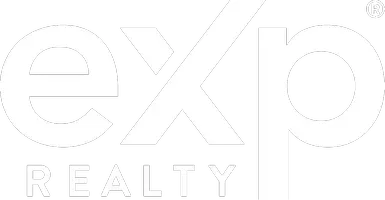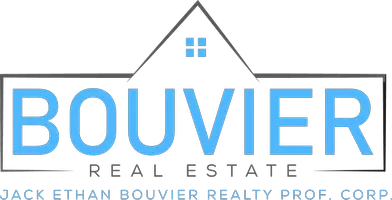Additional Costs of Homeownership: What You Need to Know
Additional Costs of Homeownership: What You Need to Know
Think buying a house is all about the down payment? Think again. The hidden costs of homeownership can quickly add up, leaving homeowners caught off guard—unless you're prepared. Beyond the excitement of securing your dream home, there are several ongoing and unexpected expenses that could drain your budget. Whether you’re a first-time homebuyer or a seasoned homeowner, it’s crucial to understand the full financial picture before you take the plunge.
In this blog post, we’ll break down the additional costs of homeownership with data-driven insights, real-life examples, and actionable advice to help you stay ahead of the curve.

1. 🏠 Property Taxes
Property taxes are one of the largest ongoing expenses of homeownership. These taxes fund local services such as schools, roads, and public safety. The amount you pay will depend on the location, size, and value of your property.
Example: In Saskatoon, homeowners can expect to pay an average of $4,000 annually in property taxes, according to the City of Saskatoon. If you live in a more expensive city or an area with higher property tax rates, this amount could be much higher.
Tip: Be sure to factor property taxes into your monthly budget. Many mortgage lenders allow you to pay them alongside your mortgage through an escrow account.
2. 🛡️ Home Insurance
Home insurance protects your property against damage from fires, theft, natural disasters, and other risks. On average, homeowners in Canada pay between $800 and $1,200 per year for home insurance. However, the premium can vary depending on the type of home you own (e.g., detached, townhouse, or condo), the coverage options you choose, and the area in which you live.
Example: If you're in a region prone to floods or wildfires, your insurance premium may increase. It's important to shop around for the best rates and ensure you have adequate coverage for your specific needs.
3. 🛠️ Maintenance Costs
Homeownership comes with ongoing maintenance and repair needs, from landscaping to roof repairs. Experts recommend setting aside 1-3% of your home’s value annually for maintenance. For a $500,000 home, that means budgeting $5,000 to $15,000 each year for upkeep.
Example:
- A roof replacement might cost anywhere from $5,000 to $15,000, depending on the size of your home.
- Plumbing issues or HVAC repairs can also run several hundred dollars.
Tip: Routine maintenance like cleaning gutters, servicing HVAC systems, and repainting can help you avoid larger, costlier repairs down the road.
4. 💼 Upfront Costs When Buying a Home
Before you even move in, there are several upfront costs that need to be accounted for:
- Home Inspection: A professional inspection costs anywhere from $400 to $600, depending on the size and complexity of the home.
- Legal Fees: You’ll need to hire a lawyer to handle the paperwork for the sale. Legal fees range from $1,500 to $2,500.
- Moving Costs: Don’t forget about the expense of actually moving. Whether you hire a moving company or rent a truck, moving costs can easily total $1,000 or more.
These expenses are often unexpected for first-time homebuyers, but they can add up quickly.
5. 💡 Utilities and HOA Fees
In addition to your mortgage, property taxes, and insurance, homeowners also need to budget for utilities such as electricity, water, and gas. The costs of these services vary depending on the size of the home, the number of occupants, and local utility rates.
If you live in a community governed by a homeowners' association (HOA), there could also be monthly or annual fees. These fees can cover amenities like lawn care, security, or community maintenance.
Tip: Set up automatic payments for utilities and HOA fees so that you never miss a due date.
How to Prepare for These Costs
The key to managing homeownership costs is planning ahead. Here are a few actionable steps to help you stay financially prepared:
Create a “Homeownership Fund”
A dedicated savings fund for homeownership expenses can help you stay on top of both expected and unexpected costs. Aim to save at least three months of emergency expenses, which can cover anything from urgent repairs to temporary job loss.
Actionable Advice:
- Open a high-interest savings account specifically for homeownership expenses.
- Deposit a set amount each month into the account, ensuring you’re building a cushion for future costs.
Budget for Regular Maintenance
Rather than scrambling to come up with funds when something breaks, incorporate regular maintenance into your monthly budget. For example, setting aside $400 a month for maintenance could prevent financial strain if you need to replace your furnace or have a major plumbing issue.
Consider Energy Efficiency Improvements
Energy-efficient upgrades, such as adding insulation, upgrading to LED lighting, or replacing old appliances, can reduce your utility bills in the long run. Although these improvements may have an upfront cost, they can pay off by saving you money on utilities.
Review Your Insurance Coverage Annually
As your home’s value increases or decreases, your insurance needs might change as well. It’s a good practice to review your policy every year to ensure you’re adequately covered and not overpaying.
Conclusion
Homeownership is more than just making your mortgage payments. From property taxes and insurance premiums to maintenance costs and unexpected repairs, the additional expenses can quickly pile up. But with careful planning and budgeting, you can avoid financial stress and keep your homeownership experience as smooth as possible.
Are you thinking about buying a home or already a homeowner? Let’s go over all the costs together to make sure you’re fully prepared. Contact me for a free cost breakdown, and let's work together to create a budget that ensures homeownership is a rewarding experience, not a financial burden.
Categories
Recent Posts










GET MORE INFORMATION


